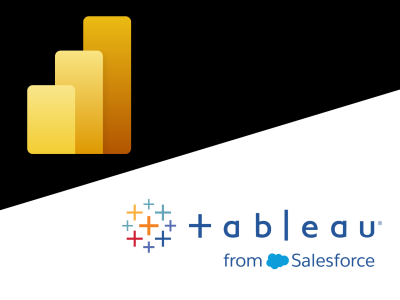10 features of business intelligence tools you never knew you needed
You may think that you’ve mastered the world of business intelligence tools, but there’s always more to learn. New features and capabilities are being added to business intelligence tools as fast as the world of data changes..
As you unlock the value of data in your organization, you can quickly discover deeper insights and make better decisions by leveraging some of the features in business intelligence tools that you never knew existed.
In this article, we will break down ten of these features that can help you get the most out of your data. Whether you are a mom-and-pop shop or a multinational corporation, these features can take your business to the next level.

What are business intelligence (BI) tools and what do they do?
Let’s start with a quick refresher on business intelligence tools. BI tools are software applications used to collect, store, and analyze data. This data can come from a variety of sources, including transactional databases, spreadsheets, and social media platforms.
The data is then processed and presented in a way that users can easily understand. This can be in the form of charts, graphs, maps, or other visualizations.
BI tools can help organizations in many ways. For example, they can be used to track sales numbers, customer satisfaction levels, social media engagement, website traffic, and more.
They can also be used to identify trends and outliers. Additionally, BI tools can help predict future outcomes and recommend actions to take based on those predictions.
10 BI tool features you never knew you needed
Now that we’ve reviewed what BI tools are and what they can do, let’s take a look at ten features that you never knew you needed.
1. Data visualization
What better way to interpret data than to see it in a visual format? Data visualization is one of the most powerful features of BI tools. It allows users to see patterns and trends that they might not otherwise be able to see.
BI tools allow you to create a variety of visuals, such as charts, graphs, and heatmaps. There are also many different ways to customize these visuals to fit your needs.
2. Data discovery
Data discovery is a feature that allows users to explore data without having to write any code. This is a great way to quickly find insights that you might not have found otherwise.
Typically, data discovery involves using natural language processing (NLP) to parse through data. This means that you can ask questions about your data in plain English and the BI tool will return results accordingly.
For example, you make a statement like “show me all customers who live in California” or “show me all orders from the last month.” This can help you save a lot of time and effort when trying to find specific data sets.
3. Data mining
Data mining is the process of extracting valuable information from large data sets. This can be done manually or with the help of machine learning algorithms.
BI tools that offer data mining capabilities can help you find hidden trends and patterns in your data. This can be extremely helpful when trying to make better decisions about your business.
4. Ad-hoc reporting
Ad-hoc reporting is a feature that allows users to create custom reports on the fly. This is different from traditional reporting, which typically involves predefined reports that are run on a schedule.
With ad-hoc reporting, you can quickly generate reports based on any data set that you have. This can be extremely helpful when you need to get a quick answer to a question.

5. Data warehousing
Data warehousing is the process of storing and organizing disparate data in a central location. This allows users to access the data more easily and provides a single source of truth for the organization.
A data warehouse can be used to store historical data, current data, or both. This can be extremely helpful for organizations that need to track long-term trends.
6. Predictive analytics
Predictive analytics is the process of using past data to predict future outcomes. This can be done with the help of machine learning algorithms.
BI tools that offer predictive analytics capabilities can help you make better decisions about your business. For example, you could use predictive analytics to predict customer churn or forecast future sales.
7. Real-time data
Real-time data is data that is constantly updated. This means that you can get current insights into what is happening with your business.
BI tools that offer real-time data capabilities can be extremely helpful for organizations that need to make quick decisions. For example, if you’re running a marketing campaign, you’ll want to be able to see how it’s performing at that moment so that you can make necessary changes accordingly.
8. Collaboration
Collaboration is the process of working together to achieve a common goal. BI tools that offer collaboration features can help teams work together more effectively.
For example, some BI tools offer chat features that allow team members to communicate with each other in real time. Other BI tools offer features that allow team members to share data and work on projects together.
9. Mobile device compatibility
BI tools that offer mobile device capabilities can be extremely helpful for organizations that need to make decisions on the go. For example, if you’re a sales manager, you’ll want to be able to access your sales data from your phone so that you can make decisions while you’re away from your desk.
10. Scalability
Scalability is the ability of a system to handle increasing workloads. BI tools that are scalable can grow with your organization.
This is an important feature to consider if you anticipate your organization growing in the future. For example, if you’re a startup, you’ll want to make sure that your BI tool can scale as you add more users and data sets.

What future features will BI introduce?
While these ten features can help you make better decisions about your business, they are just the tip of the iceberg when it comes to BI tools.
As data sets continue to grow and become more complex, BI tools will continue to evolve to meet the needs of users. So, what can we expect from BI tools in the future?
Increased accuracy
As data sets continue to grow, so will the accuracy of predictions made by predictive analytics algorithms. This is because there will be more data to work with, which will allow algorithms to learn more about trends and patterns.
More real-time data
Real-time data is becoming increasingly important for organizations that need to make quick decisions. As such, we can expect BI tools to offer more real-time data capabilities in the future.
Improved collaboration
BI tools will continue to evolve to meet the needs of collaborative teams. For example, we can expect BI tools to offer more features that allow team members to instantly communicate with each other.
Enhanced AI integration
AI is becoming increasingly important for business intelligence. We can expect BI tools to offer more AI-powered features in the future. For example, we may see BI tools that offer automatic report generation or more robust natural language processing capabilities.
Greater scalability
As organizations continue to grow, so will their need for scalable BI tools. We can expect BI tools to offer greater scalability in the future so that they can meet the needs of rapidly growing organizations.
These are just a few of the features we can expect to see in BI tools in the future. As data sets continue to grow and become more complex, BI tools will continue to evolve to meet the needs of users.
The bottom line
Business intelligence tools are essential for companies that want to make data-driven decisions. BI tools provide users with a variety of features that can help them better understand their data.
However, many users are not aware of all the features that BI tools offer. With these ten unique features of the BI tool at your disposal, you can unlock the true power of data and make better business decisions.
Check out some related resources:

Power BI or Tableau? A Side-by-Side Comparison

10 Qlik Alternatives & Competitors in 2025






